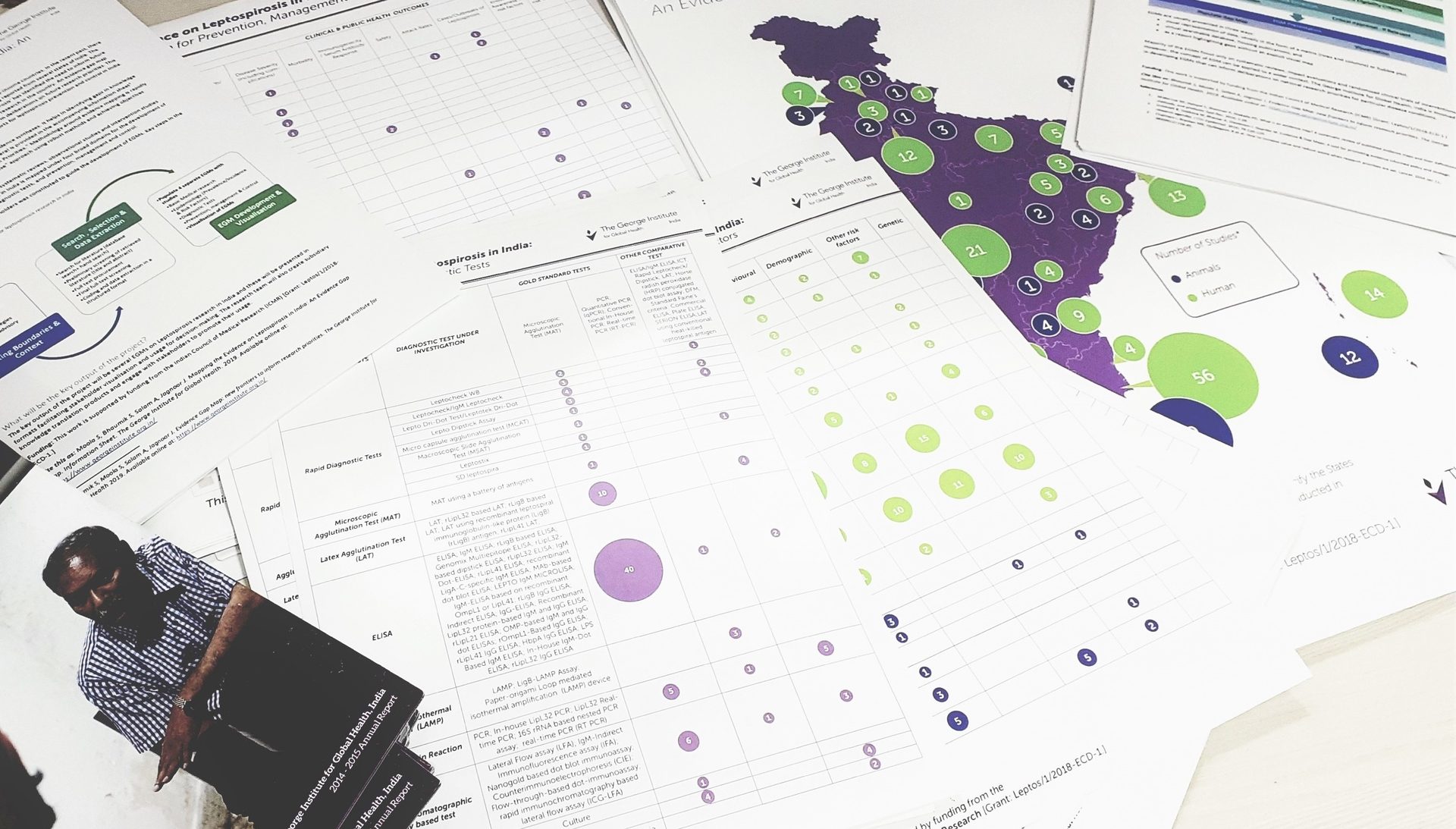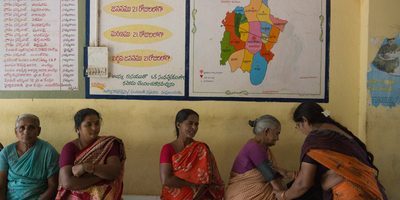
Evidence Gap Maps: a valuable tool to hone efficiency
You may have heard of evidence gap maps – they have been used in health, social and environmental research for a while now. But, let’s be honest, is it possible some of us glaze over when hearing the words ‘evidence’, ‘gap’ and ‘map’ linked together?
The solution may lie in seeing them as the tool of efficiency they are. Anna Palagyi, Senior Research Fellow, Centre for Health Systems Science at The George Institute, explains.
What is an evidence gap map (EGM)?
An EGM is a systematic approach to assembling existing knowledge in a visual form for the purposes of identifying the strengths and gaps in evidence around a particular topic. We have recently used the approach to assess the available evidence on interventions to strengthen the organisation and financing of primary health care (PHC). This process helped us to assess the different PHC system interventions that have been tested through studies to-date, and to identify the evidence gaps (i.e. where there is a lack of research to determine intervention effectiveness).
One of the original creators of EGM is 3ie (the International Initiative for Impact Evaluation), who apply their EGMs to help decision-makers looking to see what evidence exists to inform policies and programs. The 3ie EGMs include evidence from impact assessments and systematic reviews that directly measure the impact of a policy or program on its intended outcome. However, EGMs can be used for a range of purposes and approached in a number of ways. You might (as we have done) use an EGM to identify key gaps in original research on a broad research topic, to inform a process of evidence priority setting.
Here are some EGM examples:
- The George Institute for Global Health: ‘Primary health care organisation and financing in low- and middle-income countries of the Asia-Pacific region’
- 3ie: ‘Social, behavioural and community engagement interventions for reproductive, maternal, newborn, child health’
- UNICEF: ‘Adolescent well-being in low- and middle-income countries: protection, participation, and financial and material well-being’
As you can see, EGMs comprise a framework that systematically maps the available evidence on a topic based on a set of pre-defined outcomes, allowing easy identification of where existing evidence is strong and where there are gaps in knowledge.
Why are they used?
An EGM is a powerful instrument that gives a visual representation of the evidence landscape and critical assessment of quality and provides a complementary approach to systematic or scoping reviews. By accompanying an evidence review or synthesis with an EGM, you can easily see what evidence there is (the EGM) and learn more about what the evidence says (the synthesis), including the broader context of an interventions success or failure.
The EGM can assist evidence-based decision making for health policy makers and health system planners, as they can quickly explore the findings and quality of the current evidence base and use this to make informed decisions. EGMs can also help to guide future research by identifying the strengths and gaps of existing evidence, including where evidence is lacking or of poor quality. This enables both researchers and funders to see where additional research investment is needed, and helps to avoid wasting resources on research that has been done before.
There are so many gaps… How can we prioritise evidence needs?
The evidence mapping process will often identify numerous knowledge gaps for potential future study, and when working with limited research resources it can be challenging to know how to proceed. Conducting a prioritisation process together with the intended end users of our research outcomes is one way to move forward in these situations. The Delphi technique provides one such approach to collaborative priority setting.
A Delphi exercise involves systematic consultation with a panel of ‘experts’ (people with experience or general knowledge in the field of interest, or opinion leaders) to reach a consensus. The inputs of individual panel members feed into an iterative prioritisation process over several rounds of survey, administered by postal mail, email or online. One of the advantages of the Delphi approach is the anonymity of responses, so individual participants aren’t influenced by the preferences of other panel members. When it comes to selecting your panel, relevant representation is more important than numbers; panel members should comprise a good representation of the intended end users or stakeholders involved in the project.
We used the evidence gaps arising from our EGM on interventions to strengthen PHC organisation and financing as the basis of a Delphi exercise with PHC stakeholders from the Asia-Pacific region to identify priority questions for future research.
Why do we need to prioritise evidence needs?
There are a few reasons why it is important to prioritise evidence needs. Firstly, the prioritisation process emphasises the engagement of end users – policy makers, health workers, researchers, program managers, planners – in identifying the research questions of greatest importance based on their current local priorities.
Prioritising evidence needs then enables us to match research investment with the questions that are the most relevant to addressing policy, program, service or intervention knowledge gaps, making the most efficient use of scarce research resources.
The focus on evidence prioritisation also shifts the emphasis from research that has been traditionally driven by funding availability and researcher interests, to driving research through identified end-user needs. In this way, EGMs combined with a priority setting process have the potential to inform the direction of future priorities for funders and, most importantly, lead to research outcomes that are more likely to be both useable and used.
A new global research agenda to advance primary health care and achieve UHC
Read the latest available evidence on primary health care gaps which includes 14 papers from 6 organizations highlighting the urgent need for solutions, models, and strategies to build strong primary health care systems: ‘Strengthening Primary Health Care Through Research: Prioritized knowledge needs to achieve the promise of the Astana Declaration’, published in BMJ Global Health
Papers lead by researchers from The George Institute:
- Organisation of primary health care in the Asia-Pacific region: developing a prioritised research agenda
- Organisation of primary health care systems in low- and middle-income countries: review of evidence on what works and why in the Asia-Pacific region
- Primary health care financing interventions: a systematic review and stakeholder-driven research agenda for the Asia-Pacific region
Read more Thought Leadership blogs at The George Institute for Global Health




